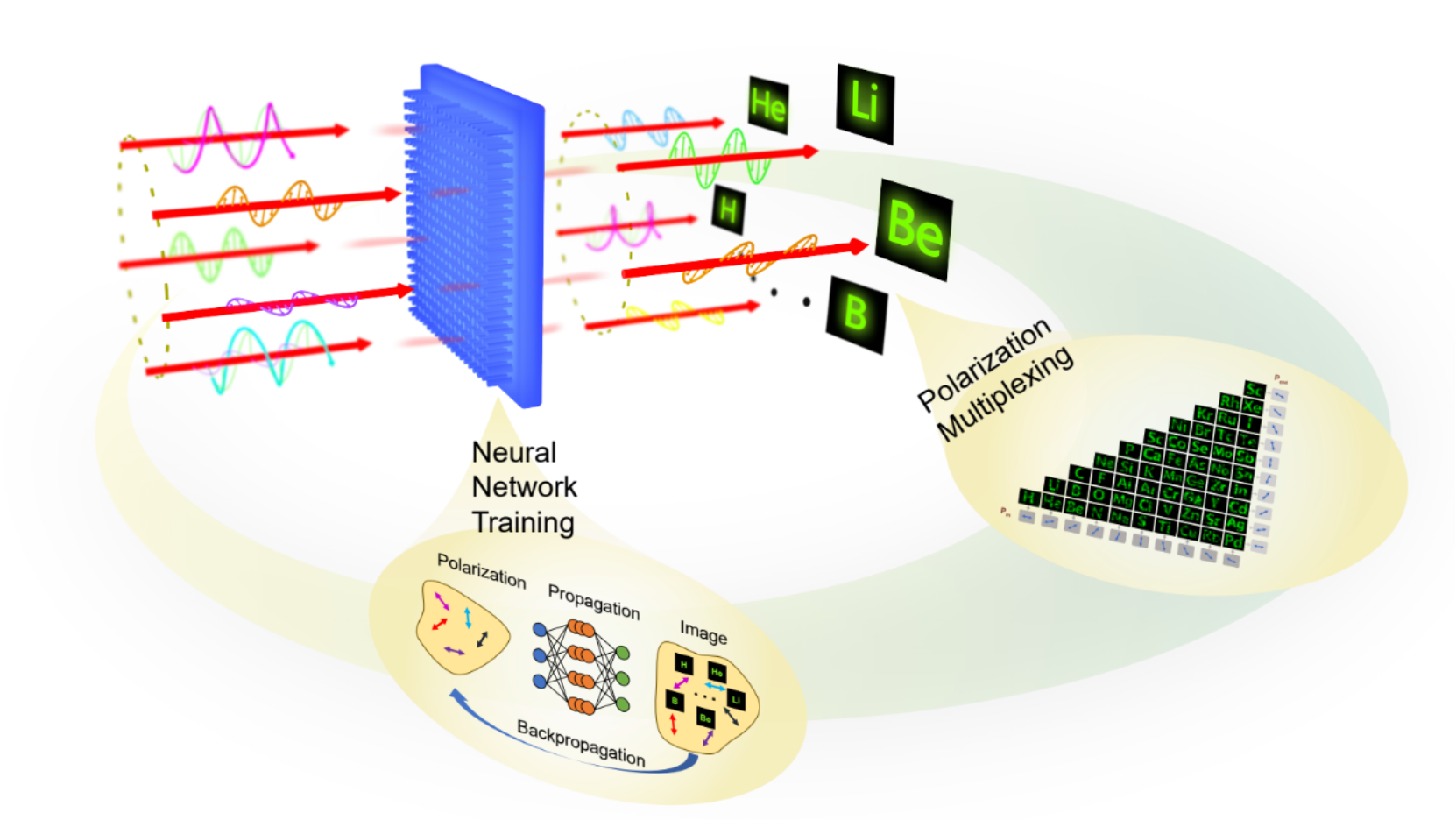- 首页 >> Research >> Research Progress
Research Progress
Advancement in Non-Orthogonal Polarization Holographic Multiplexing Enabled by Diffractive Optical Neural Network
A research team led by Professors Guanhai Li, Xiaoshuang Chen, and Wei Lu from the Key Laboratory of Infrared Science and Technology, in collaboration with Professor Huaizhong Xing's group at Donghua University, has achieved a significant breakthrough in non-orthogonal polarization holographic multiplexing using a diffractive optical neural network at the subwavelength scale. This progress has the potential to impact applications in complex scene target generation, communication channel capacity enhancement, nonlinear optics, and polarization detection. The work was published in Nature Communications under the title "Unlocking Ultra-High Holographic Information Capacity through Nonorthogonal Polarization Multiplexing."
Metasurfaces, composed of subwavelength-scale structural units, can manipulate multiple photon dimensions—such as phase, amplitude, and polarization—via mechanisms like geometric phase and resonant modes. While orthogonal polarization states (e.g., horizontal and vertical) can be independently controlled without interference, this orthogonality inherently limits the potential for multiplexing similar wavelength channels.
To address these challenges, the research team introduced a novel mechanism for non-orthogonal polarization multiplexing by manipulating the local eigen polarization of metaatoms at the subwavelength scale. This approach enables a nonzero inner product between the input and output polarization states of each metaatom, allowing for the theoretically complete isolation of three non-orthogonal polarization channels for holographic multiplexing without relying on spatial, temporal, or other dimensions. Additionally, the team employed a vector diffractive optical neural network for globally optimized metasurface design, enhancing diffraction efficiency and suppressing crosstalk. This method successfully demonstrated multiplexing across 55 holographic channels with different input and output polarization states using a 10×10 Jones matrix. By combining local eigen polarization control with globally optimized non-orthogonal polarization channels, the team achieved selective coupling or suppression of different non-orthogonal polarization states, paving the way for multidimensional and multifunctional integrated photon multiplexing.
Dr. Jie Wang, Jin Chen and Feilong Yu are the co-first authors of the paper, with Professor Guanhai Li as the corresponding author. This research was supported by the Ministry of Science and Technology, the National Natural Science Foundation of China, the Chinese Academy of Sciences, and the Shanghai Municipal Science and Technology Commission.

Figure 1 Diffractive optical neural network enables eigen polarization manipulation for 55-channel non-orthogonal polarization holographic multiplexing.
Paper link:https://doi.org/10.1038/s41467-024-50586-5
Contact:Prof. Guanhai Li Email:ghli0120@mail.sitp.ac.cn
